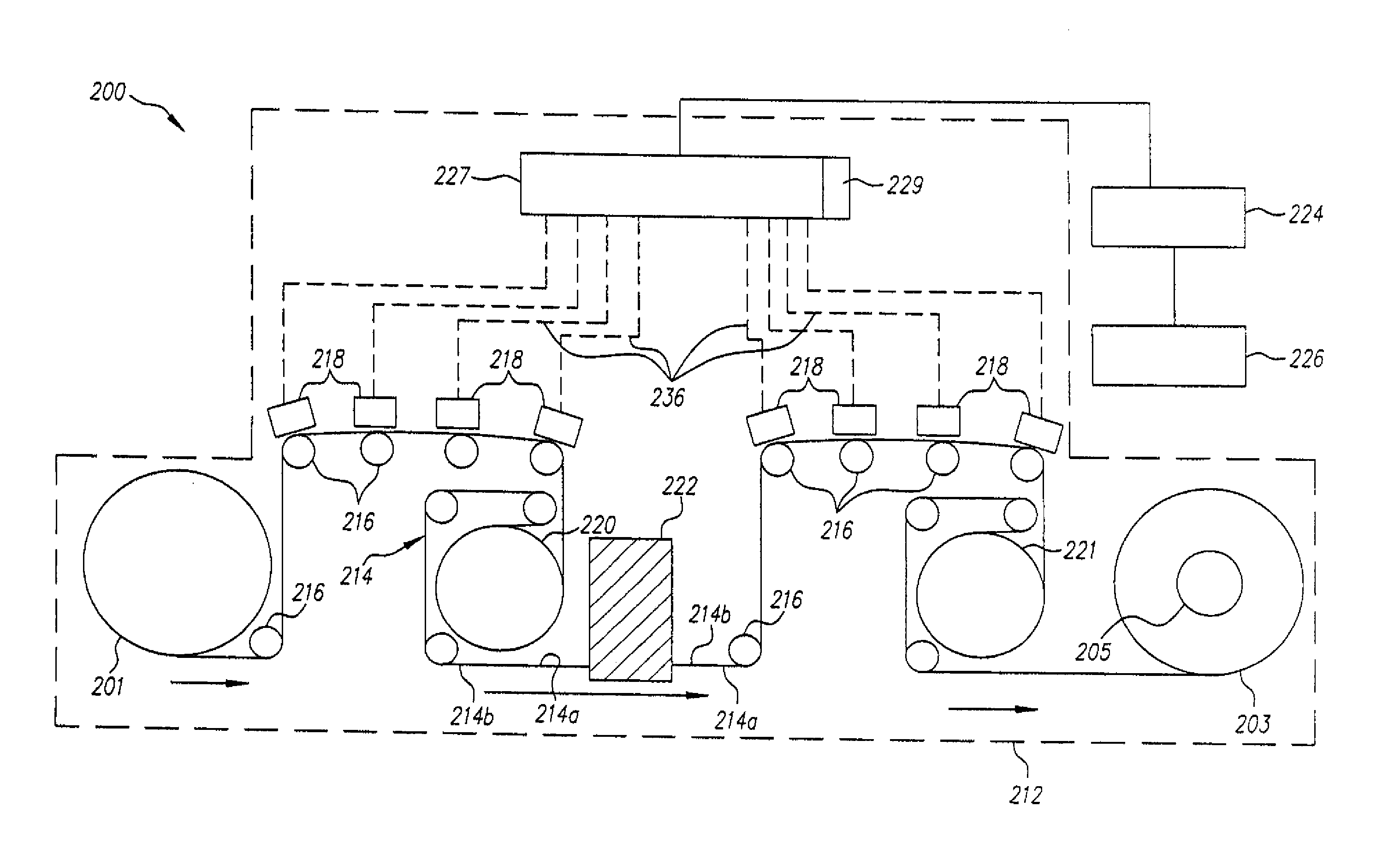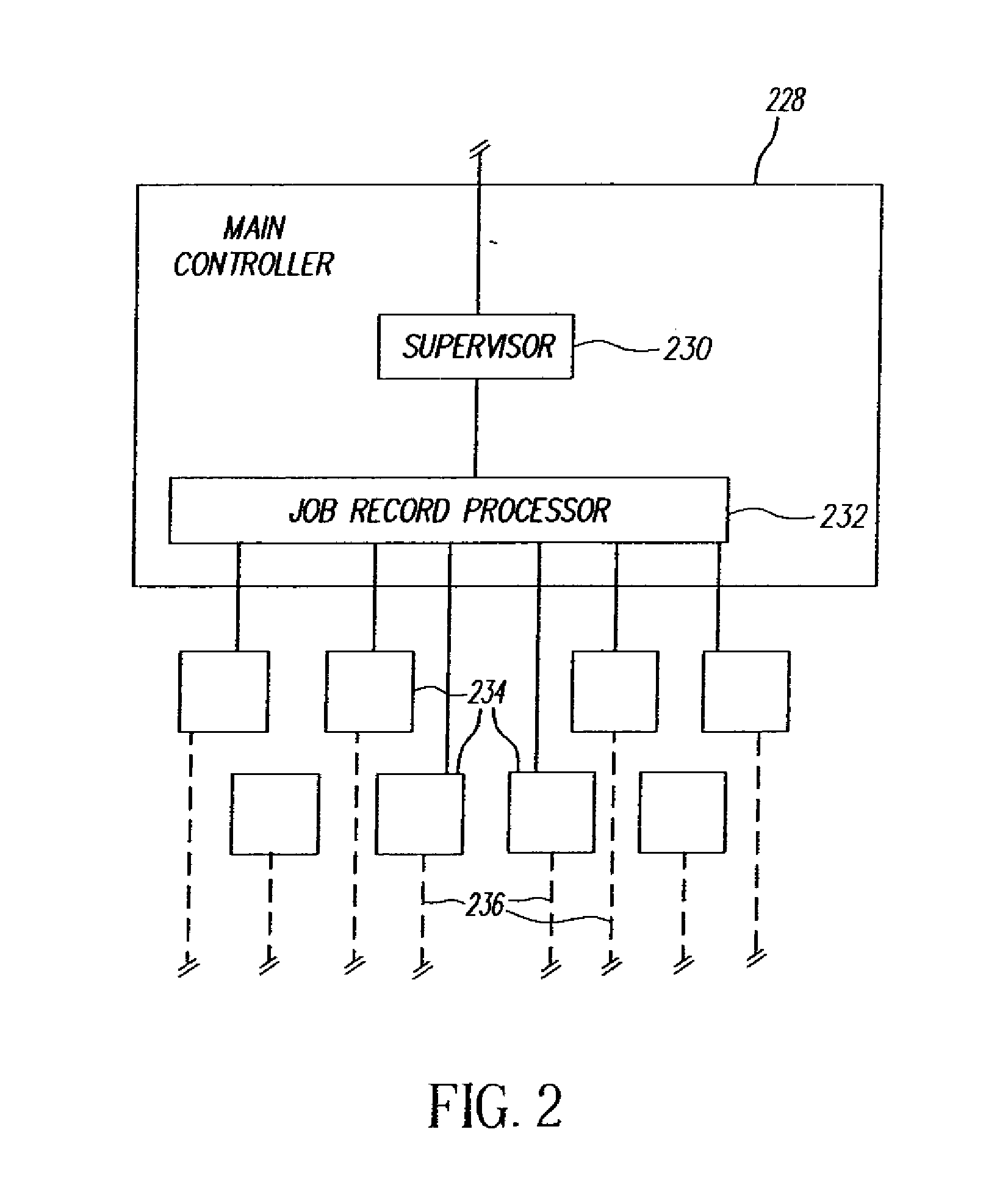Multi-head press data delivery rate control
a technology of data delivery and multi-head presses, applied in the direction of digital output to print units, instruments, visual presentations, etc., can solve the problems of encumbering making any last-minute changes, supplying data, and affecting the accuracy of data delivery
- Summary
- Abstract
- Description
- Claims
- Application Information
AI Technical Summary
Benefits of technology
Problems solved by technology
Method used
Image
Examples
Embodiment Construction
[0019]High speed variable printing systems are used in the commercial printing industry for printing a wide variety of printing applications from printing short run catalogs, and advertisements to printing transactional printed products such as billings and investment reports.
[0020]Referring to FIG. 1, the system 200 has a press (indicated by dashed line 212) that prints on a receiver 214. The term “receiver” refers to media that accepts a printed image and is singular or plural, as indicated by context. A receiver can be multiple cut-sheets. In particular embodiments discussed herein, the receiver is in the form of a web, that is an elongate, continuous piece. The use of a web typically allows the press (also referred to herein as a printer) to attain higher speeds in transport, than other forms of receiver, such as cut-sheets. The receiver is typically paper, but can also be any of a large number of other types of print media. For example, the receiver can be thin or thick paper s...
PUM
 Login to View More
Login to View More Abstract
Description
Claims
Application Information
 Login to View More
Login to View More - R&D
- Intellectual Property
- Life Sciences
- Materials
- Tech Scout
- Unparalleled Data Quality
- Higher Quality Content
- 60% Fewer Hallucinations
Browse by: Latest US Patents, China's latest patents, Technical Efficacy Thesaurus, Application Domain, Technology Topic, Popular Technical Reports.
© 2025 PatSnap. All rights reserved.Legal|Privacy policy|Modern Slavery Act Transparency Statement|Sitemap|About US| Contact US: help@patsnap.com



